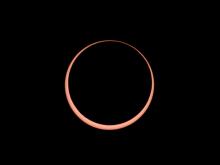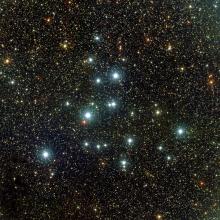Listen to today's episode of StarDate on the web the same day it airs in high-quality streaming audio without any extra ads or announcements. Choose a $8 one-month pass, or listen every day for a year for just $30.
You are here
Holiday Lights
For sheer spectacle, it’s hard to beat the great light shows on a New Year’s Eve — everything from the ball dropping in Times Square to fireworks above the Queen Mary.
And the starry night offers up a pretty spectacular light show of its own. The almost-full Moon is encircled by some of the brightest stars in the night sky. The whole array is in great view by a couple of hours after sunset, and remains in view all night. And the stars are all so bright that they’re visible even from light-polluted cities.
The faintest members of the stellar wreath stand to the lower left of the Moon: Pollux and Castor, the twins of Gemini. Pollux is the brighter of the two. And the brightest member of the wreath stands well above them, to the upper left of the Moon: Capella, the leading light of Auriga the charioteer. It’s the sixth-brightest star in the night sky, so it’s hard to miss.
To the upper right of the Moon, there’s Aldebaran, the eye of the bull. And down below Aldebaran, look for the bright stars of Orion the hunter. Betelgeuse stands closest to the Moon, with Orion’s three-star belt to the right, and Rigel to the right of the belt.
Several of these impressive stars show a bit of color — from orange to blue. The tints are subtle, though. In the glare of the brilliant Moon they can be hard to see. Even so, the stars will stand out — bright natural lights in the busy New Year’s Eve sky.
Script by Damond Benningfield






